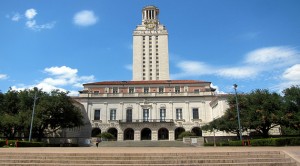Public Ivy is a term coined by Richard Moll in his 1985 book Public Ivies: A Guide to America’s best public undergraduate colleges and universities to refer to universities that provide an Ivy League collegiate experience at a public school price
High-performing students looking for a top-notch education—without shelling out tens of thousands of dollars—would do well to check out the country’s public Ivy League schools. While getting into a Public Ivy can be tough, getting a good education at a more reasonable price could be a high school graduate’s best option.
However, it’s important to note that there are varying opinions among experts as to which schools should be considered a top Public Ivy. The idea of a strong Public Ivy doesn’t just include high-performing academics but also encompasses a rich history, attractive campus and diverse student population that you’d expect from the ivied halls of a Yale or a Harvard.
The original Public Ivies as they were:
- College of William & Mary (Williamsburg, Virginia)
- Miami University (Oxford, Ohio)
- University of California
- University of Michigan (Ann Arbor)
- University of North Carolina at Chapel Hill
- University of Texas at Austin
- University of Vermont (Burlington)
- University of Virginia (Charlottesville)
The worthy runners-up
Moll also offered in the same book “a list of worthy runners-up” and brief summaries of them:
- University of Colorado Boulder
- Georgia Institute of Technology
- University of Illinois at Urbana-Champaign
- New College of the University of South Florida (now New College of Florida)
- Pennsylvania State University at University Park
- University of Pittsburgh
- State University of New York at Binghamton (also called Binghamton University)
- University of Washington
- University of Wisconsin–Madison
The Public Ivies according to Greenes’ Guides
A later book titled The Public Ivies: America’s Flagship Public Universities (2001) by Howard and Matthew Greene of Greenes’ Guides expanded upon the first list to include 30 colleges and universities. The list below is organized by region, and colleges are listed in alphabetical order. The more recent and expansive Greene’s list (including a list of approximately 30 schools) had one focus alone: public schools with academic quality comparable to an Ivy League institution.
Northeastern
- Pennsylvania State University (University Park)
- Rutgers University (New Brunswick, New Jersey)
- State University of New York at Binghamton (also known as Binghamton University)
- University of Connecticut (Storrs)
Mid-Atlantic
- University of Delaware (Newark)
- University of Maryland (College Park)
- College of William & Mary (Williamsburg, Virginia)
- University of Virginia (Charlottesville)
Southern
- University of Florida (Gainesville)
- University of Georgia (Athens)
- University of North Carolina at Chapel Hill
- The University of Texas at Austin
Western
- University of Arizona (Tucson)
- University of California, Berkeley, LA, Davis, Irvine, San Diego and Santa Barbara campuses
- University of Colorado Boulder
- University of Washington (Seattle)
Great Lakes & Midwest
- Indiana University (Bloomington)
- Miami University (Oxford, Ohio)
- Michigan State University (East Lansing)
- The Ohio State University (Columbus)
- University of Illinois (Urbana–Champaign)
- University of Iowa (Iowa City)
- University of Michigan (Ann Arbor)
- University of Minnesota (Minneapolis–Saint Paul)
- University of Wisconsin (Madison)
How much do these schools cost? Because Public Ivies are partially state-funded, their tuition fees are substantially lower than those of academically comparable private schools. For comparison’s sake, let’s look at the 2012-2013 tuition rates of several private and public ivies:
Private
• Harvard University: $40,866
• Princeton University: $38,650
• Yale University: $42,300
Public
• University of California, Berkeley: $11,767 (in-state), $34,645 (out-of-state)
• University of Virginia: $12,006 (in-state), $38,018 (out-of-state)
• University of Michigan, Ann Arbor: $13,437 (in-state), $39,109 (out-of-state)
Because of private funding, Ivy League schools can be less expensive for a select group of high-performing applicants—especially those with high financial needs. Students from wealthy families frequently pay the full-sticker price, while students from lower-end families to get large scholarships and grants.
The key, though, is to look at the whole package. If you’re living in the same state as a Public Ivy—or can establish residency near your school of choice before college—it’s probably the most affordable way to get an outstanding education. Nonetheless, you’ll want to apply to a variety of colleges, including some public schools that are lower on your list and private schools that may be a financial or academic reach.
One sharp distinction between the Ivy League and some “Public Ivies” is their participation in intercollegiate athletics. One of the Ivy League’s distinguishing characteristics is its prohibition on the awarding of athletic scholarships (athletes may only receive the same financial aid to which they would be entitled even if they did not play a sport). In contrast, many of the “Public Ivies” participate in major athletic conferences such as the Big Ten, Big 12, ACC, SEC, or Pac-12, and award athletic scholarships. These schools sometimes rely on profits, if any, from large-scale football and men’s basketball programs to support the athletic department as a whole.



